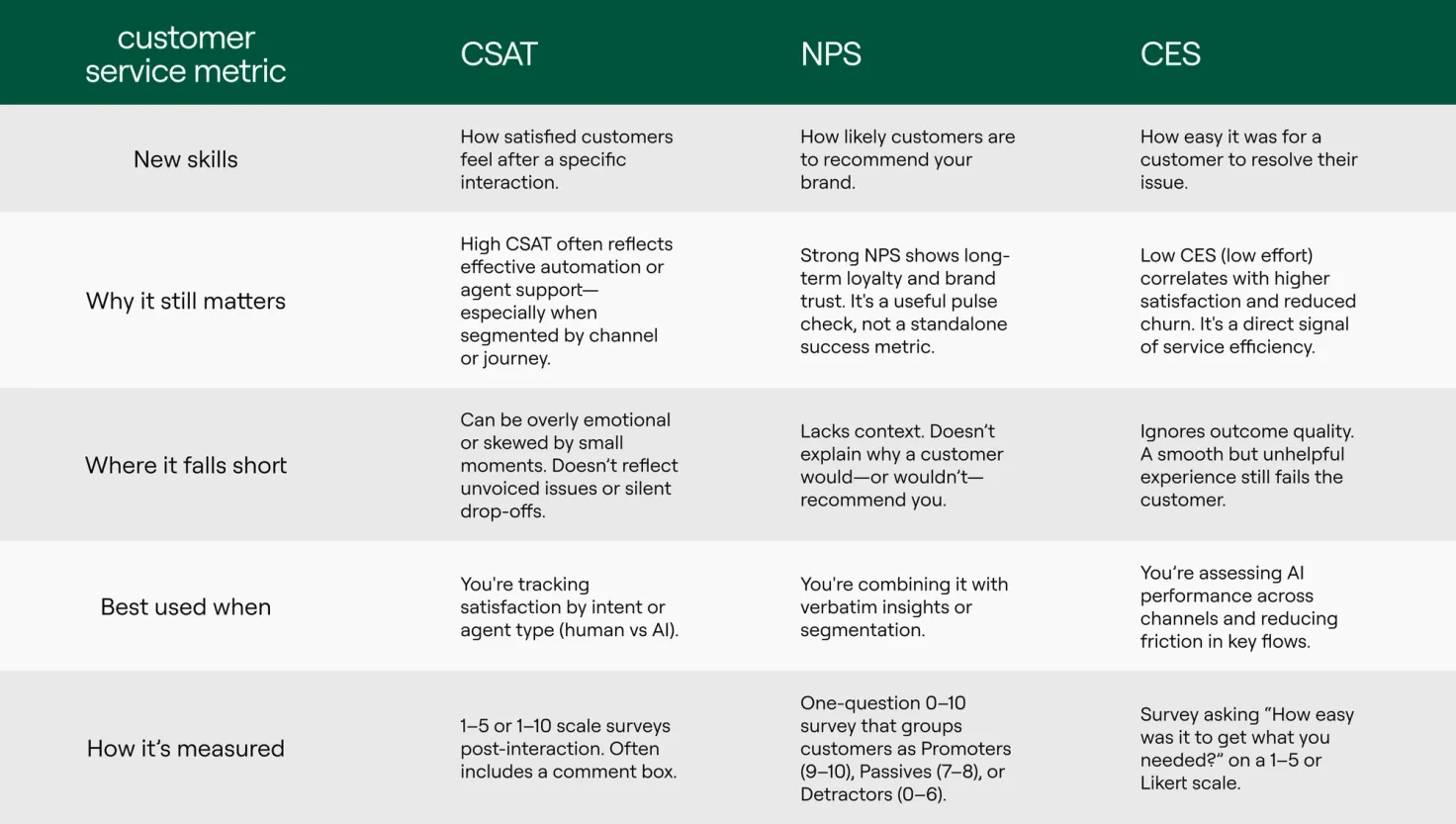
Phase Zero: How to build the business case for upgrading to an AI Voice agent
Get access to this exclusive session on-demand and discover how to turn every customer conversation into a competitive advantage.
Learn More

Most customer service metrics weren’t built for the reality we’re in now. They were made for help desk managers, not C-suite executives. For tracking volume, not driving value. For post-interaction surveys, not systems that resolve millions of inquiries automatically.
And yet, too many support leaders are still reporting performance using legacy KPIs that don’t reflect what customer service has become: a strategic, data-rich function reshaped by automation and generative AI.
In 2025, the question isn’t just how many tickets you closed or how fast you did it. It’s whether your customer service is scalable, predictive, and profitable—and whether your metrics prove it.
If your CX team wants more budget, more influence, and a stronger seat at the table , it’s time to upgrade your metric stack. Let’s talk about what actually matters now.
Customer service metrics were designed for human teams, linear workflows, and single-channel support. But CX today is none of those things. Now, you’re managing:
And yet, most teams still lead with metrics that:
Let’s be clear: CSAT, NPS, and CES aren’t bad metrics. They’re just misunderstood . Here’s how to stop treating them like end-all stats and start using them like directional signals.
Here are a few other ways legacy metrics often fail to keep up:

And then there’s AHT (Average Handle Time), which deserves special mention. Too often, it incentivizes speed over service. But if you track it alongside AR%, you can see where automation reduces human effort—and where human agents are stuck cleaning up after poor bot performance.
Automated Resolution Rate (AR%) is the gold standard for AI customer service. It tells you how often your AI agent fully resolves a customer’s inquiry—accurately, safely, and without any human involvement.
Here’s why AR% is better than containment:
But that’s just the baseline. The best CX teams take it further:
When measured right, AR% becomes the north star metric for your entire support org. It aligns teams, reveals ROI, and—unlike legacy stats—actually scales.
What if you stopped reporting on your AI agent like a tool and started managing it like a teammate ?
After all, you:
So why wouldn’t you measure its performance the way you do your human agents? Here’s what that looks like:
This isn't a dashboard—it’s a performance plan. And the better you coach your AI agent , the more value it delivers.
On May 22, see how Ada's AI agent to handles real-world customer conversations: reasoning, adapting, and collaborating like your best human teammate.
Register now
Let’s get one thing straight: the goal of metrics isn’t better reporting—it’s better strategy. That means showing how customer service:
And it means tying those outcomes to metrics your leadership team already tracks:

Legacy metrics still have a place—but only when used in the context of a modern, automated support strategy. If CSAT tells you how things felt, and NPS hints at loyalty, AR% shows you what actually worked.
Balancing age-old CX strategies with AI-first thinking isn’t just possible—it’s powerful. The future of customer service isn’t a rejection of what’s worked before. It’s a smarter, faster version of it.
Metrics are no longer just a way to prove value—they’re a way to improve it. As AI matures, we’ll move from reactive reports to real-time coaching, from after-the-fact surveys to in-the-moment sentiment detection.
The future of metrics is proactive, predictive, and personalized. And the future starts now.
This guide helps CX leaders clearly demonstrate impact—so you can drive bigger investments, gain strategic influence, and position AI customer service as a key player in company growth.
Get the guide